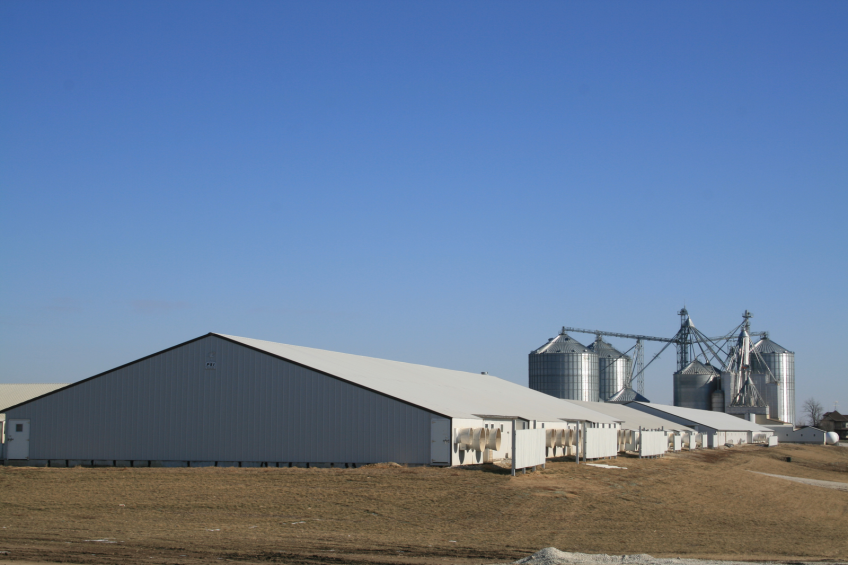PEDv: The industry’s number 1 health concern

Until May 2013, Porcine Epidemic Diarrhoea was only known to veterinarians in the US. One year later, the whole of the US knows about it – and those areas not infected pray this will stay the same. What is it and what may help to avoid it?
By Prof Dr Robert Morrison and Dane Goede, Faculty of Veterinary Population Medicine, University of Minnesota, United States
Porcine Epidemic Diarrhoea virus (PEDv) has been causing an alarming increase in piglet mortality as it continues to spread throughout the United States. Its first documented case was April 2013. The virus has been detected as of March 2014 in 27 US states with approximately 50% of sow herds reported as being infected. Its impact has compelled international interest in collaborations to mitigate its effects and transmission.
Typically introduced via a faecal-oral route of transmission, PEDv begins replication in the cells, lining the walls of the small intestines as early as 12-18 hours after introduction to the body. It quickly replicates and causes fusion and blunting/ shortening of the small intestinal villi. The maximum prevalence of the virus in small intestinal enterocytes is seen 24-36 hours post-infection (see also the picture). Suckling piglets show vomiting and severe diarrhoea and these symptoms in conjunction with reduced milking lead to fatal dehydration and malnourishment. Most piglets less than one week of age will die in a naïve herd whereas piglets with maternal immunity can survive until entry to the nursery phase when they continue to recover from diarrhoea and resume normal growth. Growing pigs and breeding animals will generally have watery diarrhoea and vomiting which can cause increased mortality and reduced average daily gain.
Some history
This disease has been seen in Europe throughout the 1970s and more recently in Asia since it was confirmed as the cause of acute diarrhoea in 1984. Since the first report in the United Kingdom in 1971, it progressed from only affecting finishing pigs to affecting suckling piglets as well by 1976. European cases described in the 1990s depicted PEDv as more severely affecting sows and fattening pigs, while still causing mild or no clinical signs in suckling and young pigs. Outbreaks in Southeast Asia, however, have had more severe diarrhoea and high mortality in suckling piglets. These Asian outbreaks show similar clinical presentation and neonatal mortality to current US examples and also are genetically similar to US isolates. Acute infection in Asian herds throughout the 1990s has developed into endemic infection characterised by intermittent periods of clinical signs and elevated preweaning mortality.
Routes of transmission of the pathogen into the US are still unconfirmed, but feed ingredients have been implicated as a potential source and identified as a confirmed source of introduction to the first case of PEDv in Canada.
Prevention is difficult
Though PEDv, like transmissible gastroenteritis virus (TGEv), is primarily a faecal-oral transmitted pathogen, unlike TGEv it has been difficult to prevent its introduction to even some of the most bio-secure breeding herds in the US. Many common routes of spread have been implicated through pilot studies of feed, air and transportation contamination. An enormous amount of viral RNA can be detected in acutely infected pigs, and the infectious dose has been suggested to be very low. Therefore, once PEDv is introduced to a region it is important to re-double efforts to maintain biosecurity at negative sites. Based on risk factors implicated to date, this should include restricting access that any birds or pests may have to swine, compost piles, and rendering pickup locations and hygiene of any transportation entering the premises and subsequently of any employees interacting with incoming vehicles.
Swine production companies in the US are attempting to prevent transmission and infection of sentinel animals after outbreaks by establishing thorough disinfection protocols involving multiple methods such as conventional chemical disinfectants (Synergize, bleach, etc.), use of flame, and use of whitewash on the floors and walls. It may also be necessary to test incoming feed products to the site for contamination. Airborne site-to-site transmission has been implicated by detection of virus RNA in the air as far as 10 miles away from acutely-infected sites, but it is unclear in what types of situations this is more likely and whether air filtration of a site is effective at preventing its spread.
Standard treatment
If PEDv is detected in a herd, standard treatment is to expose all animals at the site to the virus. Korean literature has reported that PEDv immunoglobulins in egg yolk or bovine colostrum fed to suckling piglets has a protective effect and alleviates some of the mortality. There are no commercial vaccines available in the US with proven efficacy. Therefore, in US herds exposure is achieved as quickly as possible after confirmation of infection to inoculate animals orally. The impact of different concentrations of PEDv in this feedback material on exposure and immunity in sows is yet unknown.
At the time of exposure, it has also become standard practice to immediately wean older suckling piglets (age cutoff is variable) to a growing site. It appears that many of these piglets do better with free access to water and less environmental challenges than was seen in farrowing with the virus shed by sows.
Whole-herd exposure is done to facilitate the spread of the pathogen so that the acute phase of the disease is shorter, herd immunity is uniform. There will, however, be a period of high preweaning mortality that can last approximately seven weeks post-infection. It is thought that persistent hygiene and disinfection of a recovering herd’s facilities will mitigate further challenge and help return a herd to production faster.
Communication
At the university, we encourage owners of infected herds to communicate their PEDv status with nearby neighbours. Research at the university has shown that regions with high swine site density, i.e. over five sites within a 25 square mile area (65 km2) – have increased odds of sites being positive for PEDv, and that sites in close proximity to a positive site have increased odds of being positive. Collaboration and sharing of knowledge between neighbours is crucial to try to prevent as much site-to-site transmission as possible.
The long-term effects of PED on a herd are still unknown. Since its emergence in the US, early-infected herds have demonstrated for the most part a return to normal production at six weeks post-infection on average. More recent herds have had a prolonged recovery time. It is still unclear whether these trends are related to exposure methods, hygiene at the site, season/ weather, or immunity. However, the immunity conferred by whole-herd exposure methods seems to be brief, reducing to low levels of detected nucleocapsid antibodies after only six to seven weeks.
[Source: Pig Progress Special – Piglet Health, 2014]











